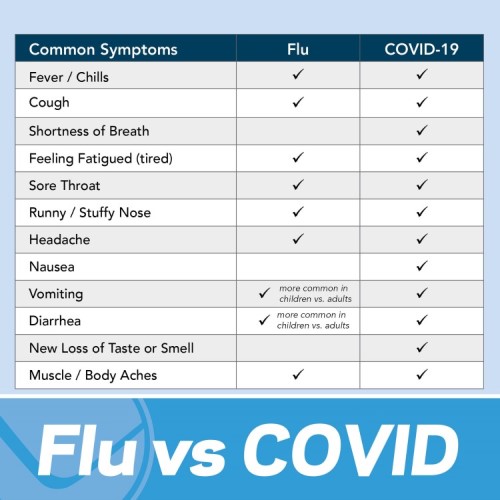Flu season is upon us and with that, it leaves many people wondering if things like cough, itchy throat, and low-grade fevers are Influenza (Flu) or if they may be experiencing symptoms of COVID-19. Below we’ve listed how both viruses may present and some tips on how to tell the difference.

FLU
- Symptoms typically occur within 1- 4 days of infection
- Most people who have the flu are contagious for about 1 day prior to showing symptoms and older children/adults are typically more contagious during the initial 3-4 days of the illness but remain contagious for around 7 days.
- Highest risk patients include: Older adults, those with underlying medical conditions which include infants/children, pregnant people.
COVID-19
- Symptoms typically occur within 5 days of infection but can appear between days 2 and 14.
- It is possible to spread the virus for about 2 days prior to experiencing any symptoms and sometimes even earlier than that. COVID-19 positive patients remain contagious for at least 10 days after their signs/symptoms first appear however, those who have weakened immune systems can be contagious for much longer.
- Highest risk patients include: Older adults, those with underlying medical conditions which include infants/children, pregnant people
Valley Health is here for you to answer any of your questions regarding signs and symptoms, testing and vaccinations against both the Influenza virus and COVID-19. For more information on our services please call your preferred healthcare provider. Click here for a full list of our locations.
**All information shared here and additional information about both Influenza and COVID-19 can be found by visiting: Similarities and Differences between Flu and COVID-19 | CDC



